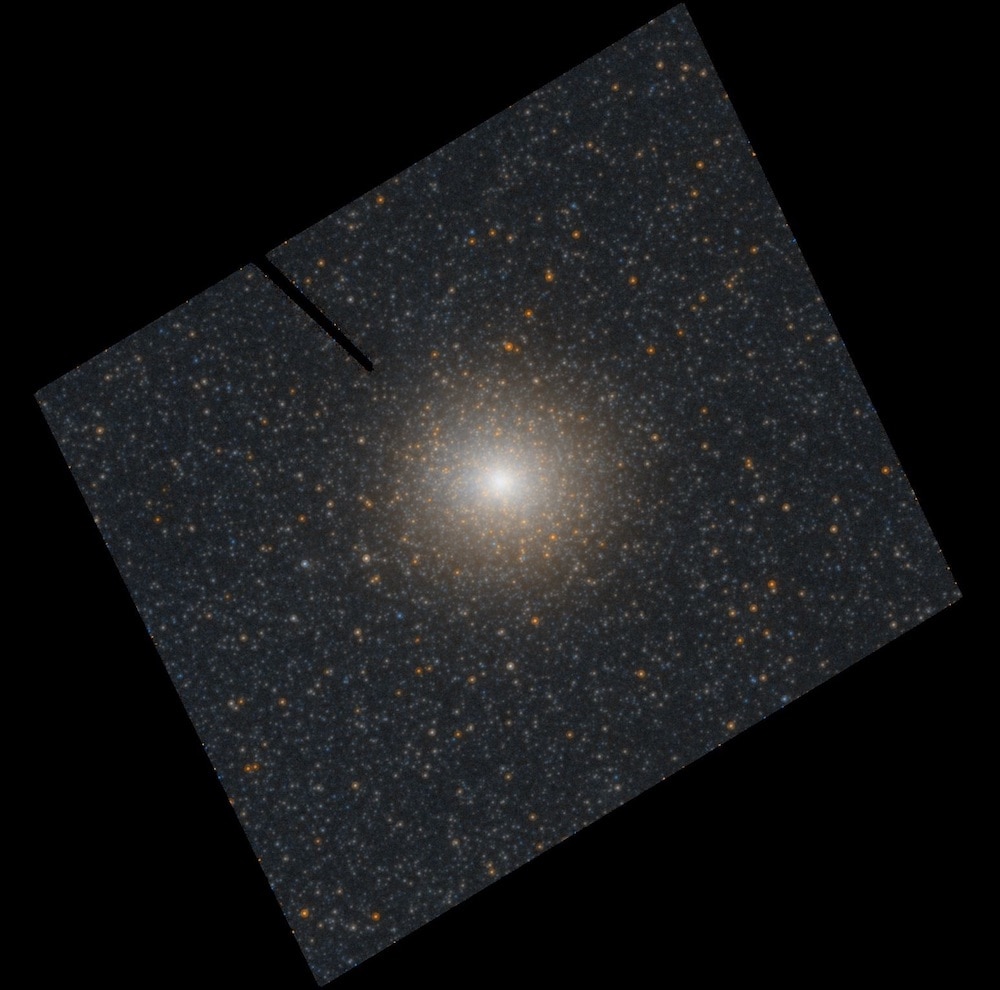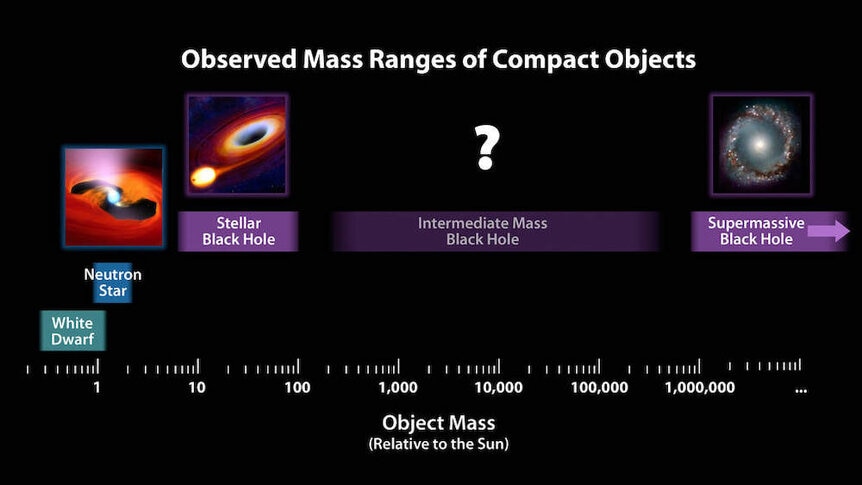Create a free profile to get unlimited access to exclusive videos, sweepstakes, and more!
This nearby space object could be the first confirmed medium-sized black hole
If you're a black hole, being swallowed by a larger galaxy is bad for growth.

Black holes are some of the most mysterious objects that exist in our universe. Because they gobble up all of the light and matter they touch, shrouding themselves in total darkness, they’re particularly difficult to find when we peer into the night sky. Despite their natural camouflage, scientists have determined ways to locate them by measuring the way they interact with nearby objects.
In the time since they were first theorized in 1916, we’ve managed to locate and confirm the existence of dozens of black holes with an estimated 40 quintillion hiding out somewhere in the observable universe. Of those, there appear to be two relatively common types. There are stellar mass black holes with masses up to 100 times that of the Sun, and there are supermassive black holes which reside at the centers of galaxies. These larger objects can have masses millions of times that of the Sun. Strikingly, we don’t find black holes of intermediate mass between the large and the (relatively) small, but that might have just changed.
Renuka Pechetti from Liverpool John Moores University and Anil Seth from the Department of Physics and Astronomy at the University of Utah, along with colleagues, might have confirmed the existence of an intermediate mass black hole (IMBH) within a globular cluster inside the Andromeda galaxy. Their findings were published in The Astrophysical Journal.
“These are pretty rare. We do expect them, based on our models, but we don’t see them,” Pechetti told SYFY WIRE.”
Their rarity could be a consequence of the way black holes form. Less massive black holes form when high mass stars collapse in on themselves, and there appears to be an upper limit to how large they can be. Supermassive black holes at the centers of galaxies form through some other mechanism, which is, to date, not totally clear. Those two mechanisms could be disparate without overlapping, meaning that the two types of black holes exist at extremes of the spectrum with IMBHs being exceedingly rare.
The team made observations of BO23-GO78, the most massive globular cluster of stars in the Andromeda galaxy and found evidence that it might house an illusive IMBH inside it. If confirmed, this intermediate mass black hole might have been the beginnings of a supermassive black hole which was stunted before it could finish growing.
“What can happen is a smaller dwarf galaxy can fall into a bigger galaxy like Andromeda, and the tidal forces of Andromeda’s gravity rip the stars off,” Seth told SYFY WIRE. “Andromeda then acquires the stars from the dwarf galaxy. Once you get down to the core, it’s so dense that Andromeda can no longer rip the stars off and it looks like a globular cluster.”
When the team observed the cluster, they found stellar velocities which weren’t easily explained by normal activity but could be explained by the presence of a black hole with a mass approximately 100,000 times that of the Sun. Alternatively, it could be that there is a collection of more typical black holes. Both hypotheses are consistent with the models, but researchers believe an IMBH is more likely.
“We know there’s dark mass there for sure, because the motion of the stars are just too fast for there not to be,” Seth said. “Whether it’s a single black hole or a collection of smaller stellar mass black holes is not totally clear. They would have to be very compact. Combined with the fact that we think it’s a galaxy nucleus drives us toward thinking it’s an intermediate mass black hole.”
In order to really confirm the existence of an IMBH inside the globular cluster, the team hopes to find evidence of matter falling onto its surface with future X-ray and radio telescope observations. That may be difficult to achieve as there doesn’t appear to be much evidence of matter nearby. In the meantime, they’re looking toward other globular clusters in hopes that they too might be stripped galactic nuclei housing black holes.
“We have already applied for telescope time for three more clusters in Andromeda which are close to the velocity of stars that we expect,” Pechetti said. “That will be the first step in finding more of these.”
If we can find them, they could teach us about the early formation of galaxies by giving us a window into the remnants of galaxies which were stopped cold mid-process. The fate of BO23-GO78 might also serve as a cautionary tale for us. Andromeda is on a collision course with the Milky Way. The two galaxies will eventually merge, in about five billion years. Any fledgling black holes hanging out on the path are on notice.



























